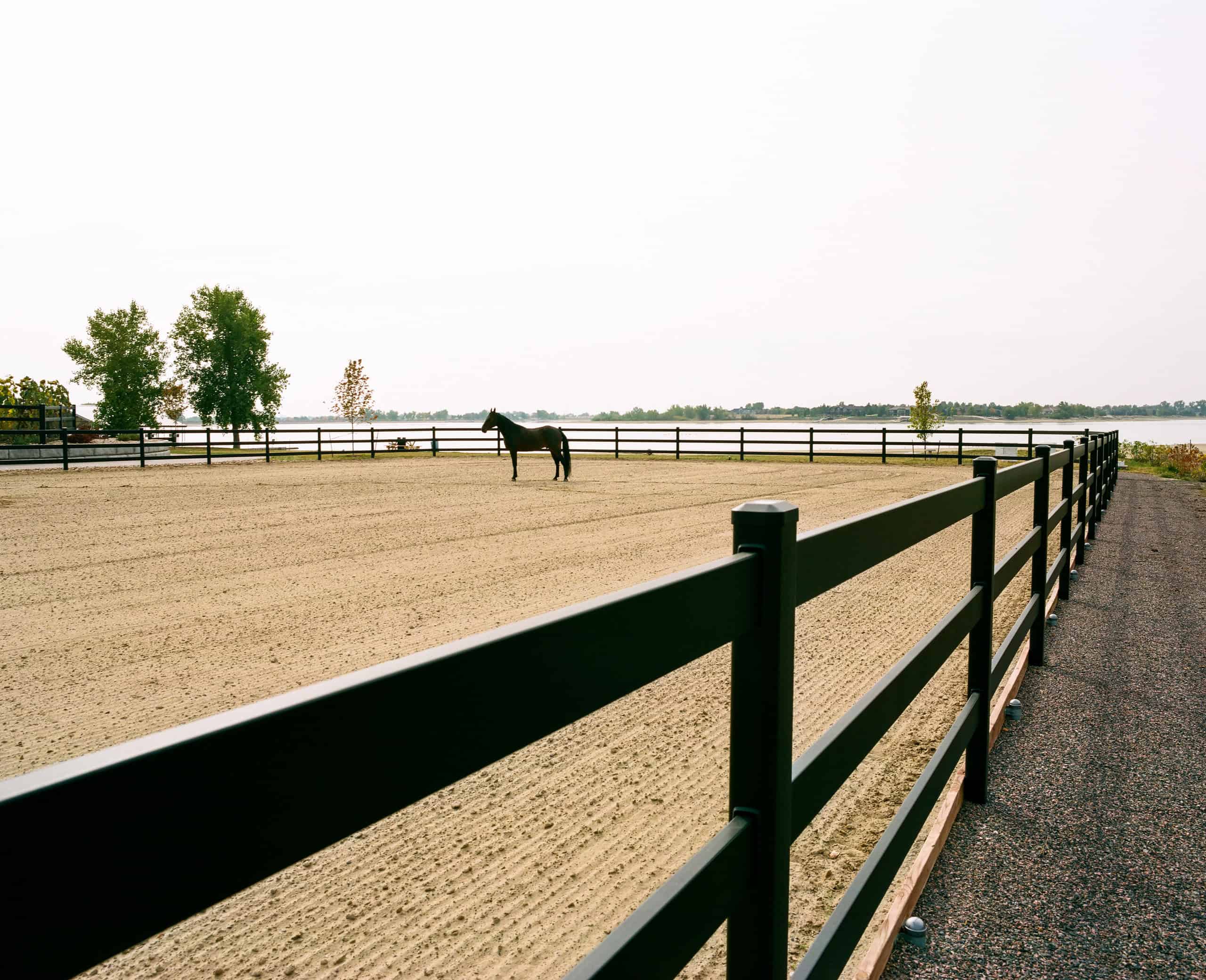Anyone who’s spent time around horses knows this truth: they’ll find the one weak spot in your fence. It’s not a matter of if, but when. And usually, they’ll test it at 2 AM during the worst storm of the year.
That’s why choosing the right type of horse fence isn’t just about marking property lines or creating nice paddocks. It’s about sleeping soundly at night knowing your horses are safe and secure, whether you’re managing a sprawling ranch or a modest stable.
Over the past few decades, we’ve seen horse fencing evolve from the simple post-and-rail setups our grandfathers built to today’s high-performance options. Some changes have been game-changers—others, well, let’s just say not every “innovation” has earned its keep in the field.
Protecting your horses demands more than just putting up any old fence and hoping for the best. Between more extreme weather patterns, rising material costs, and the simple fact that today’s horse owners expect their investments to last, the stakes are higher than ever.
Whether you’re building new or replacing old fencing, you’re making a decision you’ll live with every day for years to come. So let’s talk about what actually works in the real world, what’s worth your hard-earned money, and how to make sure your horses stay where they belong—safely on your side of the fence.
Understanding Modern Horse Fencing Needs
When it comes to horse fencing, there’s no room for cutting corners. We’ve seen firsthand what happens when folks try to save a few dollars upfront, and those stories rarely end well. The demands on modern horse fencing have evolved, and what worked twenty years ago isn’t necessarily what’s best for your horses today.
- Safety Above All Else: Your fence needs to be visible day and night, strong enough to contain a full-grown horse, yet forgiving enough to prevent injury if they make contact. No compromise here.
- Built to Weather Anything: From scorching summers to freezing winters, your fencing needs to handle temperature swings, moisture, UV radiation, and whatever else Mother Nature throws at it.
- Low Maintenance by Design: Let’s be honest—you got into horses to ride them, not to spend your weekends replacing boards. Today’s best fencing options are engineered to minimize upkeep.
- Smart Investment Value: Quality horse fencing isn’t cheap, but replacing a cut-rate fence every few years costs more in both money and headaches. The right choice pays for itself.
- Professional Appearance: Your property reflects your commitment to quality. Clean lines and proper installation don’t just look good. They add real value to your property.
The bottom line? Modern horse fencing needs to do it all, and with today’s materials and installation methods, it absolutely can.
Types of Horse Fences Worth Your Investment
After working with hundreds of ranch owners and seeing just about every fencing setup imaginable, we’ve learned this: there’s no one-size-fits-all solution. But there are definitely options worth your investment – and others that aren’t worth the trouble. Let’s cut through the noise and focus on what actually works.
1. Steel Board Fencing
The gold standard in horse fencing isn’t just our opinion—it’s what we’re seeing more ranchers and serious horse owners choose year after year. Steel board fencing brings everything to the table: unmatched strength, zero maintenance headaches, and the kind of longevity that makes the initial investment look smart.
What sets it apart is how it handles impact. When a horse tests it (and they will), it’s got just enough give to prevent injury while staying strong enough to keep them where they belong. Plus, that clean, professional look doesn’t hurt property values either.
2. Traditional Wood Fencing
Let’s be straight about wood—it’s still got its place, particularly if you’re working with a tighter budget or maintaining a certain aesthetic. Nothing beats the classic look of a well-maintained wooden fence.
But here’s the reality check: wood demands constant attention. Between replacing broken boards, fighting rot, and regular painting or staining, you’re signing up for a part-time job. If you go this route, stick with high-grade lumber and plan on regular maintenance.
3. PVC/Vinyl Options
Vinyl’s come a long way from the flimsy stuff we saw in the ’90s. Today’s PVC fencing is engineered to handle serious abuse, and it won’t rot or need painting. But let’s be clear: not all vinyl is created equal.
Cheaper options can get brittle in cold weather and sag in the heat. If you’re considering vinyl, invest in premium-grade materials rated specifically for horses. It’ll cost more upfront, but you won’t be replacing panels every spring.
4. Wire and Mesh Options
We’re including this because some folks still ask about it, but here’s our straight talk: standard wire fencing isn’t your best choice for horses. If you absolutely must use wire, stick to specifically designed horse mesh with small enough openings to prevent hoof entrapment.
No barbed wire, no field fence, no exceptions.
We’ve seen too many accidents to recommend anything else. The only wire fencing we’ll stand behind is heavy-gauge horse mesh as a secondary barrier or for specific containment needs.
5. High-Tensile Electric Fencing
Let’s talk about modern electric fencing—not your grandfather’s single-wire setup. Today’s high-tensile electric systems can be one of your smartest investments, especially for larger properties. When properly installed (and that’s key), you’re looking at excellent containment with lower material costs. The psychological barrier works wonders for most horses, and the physical barrier is nothing to sneeze at either.
But here’s the catch: you need a reliable power source, regular monitoring, and good grounding. Plus, some horses never quite make peace with it. We typically recommend it for rotational grazing or as a secondary barrier rather than your primary paddock fencing.
6. Pipe and Panel Steel Fencing
Here’s a workhorse option that’s gained traction, especially in the West. Heavy-duty pipe fencing is practically indestructible and can outlast most of us if it’s properly galvanized. The upfront cost is significant, but you’re buying decades of peace of mind.
What we like most is its versatility—great for high-traffic areas like gates and crowding pens, and tough enough for stallions or more aggressive horses. The main drawback? It’s not the most forgiving if a horse hits it at speed, so placement and proper installation are non-negotiable.
7. Cable Fencing
Now, cable fencing is something we’re seeing more of, especially when paired with other materials. Modern cable systems, when properly tensioned and maintained, offer excellent visibility and surprising strength. The key is using the right number of cables (we recommend at least five for horses) and keeping them tight.
But let’s be honest—this isn’t for every situation. It works best on straight runs and gentle curves, and you’ll want something more substantial for corners and high-stress areas. Consider it as part of a hybrid system rather than a standalone solution.
Invest in a Horse Fence You Can Trust with Buckley
At the end of the day, your horse fence is more than just a boundary—it’s a promise to your horses. When you turn in for the night or head out of town, you need to know without a doubt that your horses are safe and secure.
We’ve spent decades perfecting steel board fencing because we understand what’s at stake. It’s not just about containing horses. It’s about protecting your peace of mind. Our premium steel board fencing stands as the gold standard in the industry because it delivers what serious horse owners demand: unmatched safety, zero-maintenance durability, and the kind of long-term value that makes sense for your bottom line.
Don’t take our word for it. Talk to any Buckley Fence owner. Ask them about storms they’ve weathered, impacts their fence has handled, and how many maintenance calls they’ve had to make (spoiler alert: probably none). These aren’t just satisfied customers; they’re horse people who sleep better at night knowing they’ve made the right choice.
Ready to invest in fencing you can trust? Let’s talk about your property and your specific needs. We’ll help you design a fencing solution that works for your horses, your land, and your budget. Because at Buckley, we’re not just selling fences—we’re delivering confidence.



